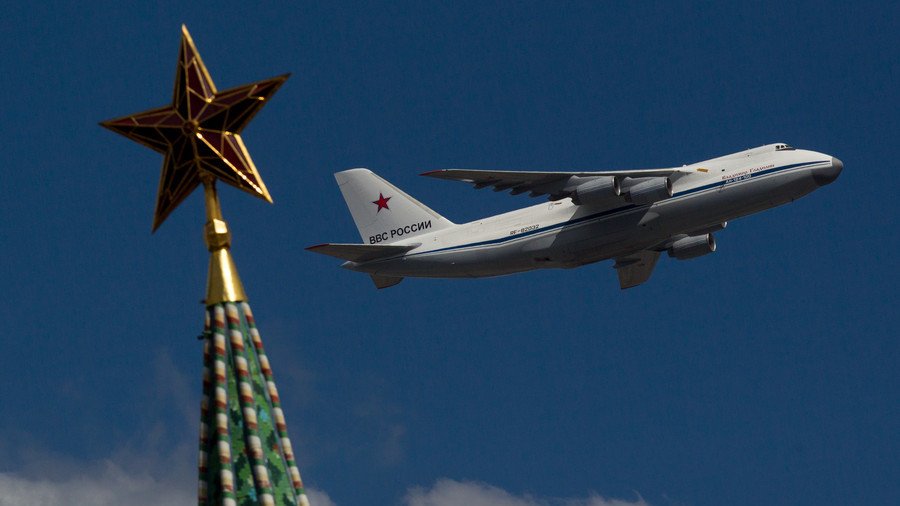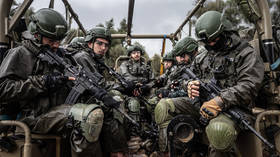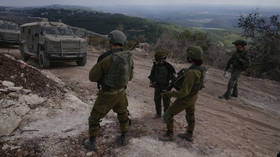What will happen to the marvel of Soviet engineering, the Antonov An-124?

The first and the most important question that needs a definitive answer is whether or not Russia should manufacture, or resume manufacture of, the largest military transport aircraft in the world, the Antonov An-124 (Ruslan).
Whenever there is a debate about “needing” to produce something, the conversation is often pointless. The only criterion is whether or not the state is ready to pay for it. If we are going to think in such categories, we will come to the conclusion that there is no real need for a jet like the Antonov An-124 right now.
The Russian Air Force has more An-124 jets in commission (25 total) than they operate. Only a handful of them actually fly. So this is somewhat ironic: on the one hand, we hear voices that we need the jet, and therefore we need to resume manufacturing; but on the other hand, the existing An-124 jets are not being serviced and remain grounded.
There are no clear answers as to why this is happening. Maybe we should hold off on making new aircraft and figure out what to do with the ones we already have?
Instead of building new planes, we could use commercial airlines. It would be cheaper. But if the military doesn’t want to do this, we can assume that there is no real need for additional resources in air transportation.
By the way, this is not a new situation with the An-124 jets – they’ve been in bad shape for many years now. Nothing has really changed since the time they were stationed at Seshcha Air Base 20 years ago. Lack of money is not a valid argument in this case – there are just no signs that we need more planes like this now.
Past experience and future prospects
Now a few words about whether or not we will need this type of aircraft in the future. There is no doubt that our country needs intercontinental airlift jets.
This is mostly because our main military transport aircraft, the Ilyushin Il-76, is not very good at transporting weapons and military equipment. And the problem is not even its range and the fact that it can’t make intercontinental flights. The main issue is that it can’t transport military equipment, with the exception of airborne forces weapons. Everything else has to be completely disassembled in order to fit on the plane. Helicopters and jets have to be taken apart, for example. Anti-aircraft systems are also too big for the Il-76 jets.
In other words, we have an aircraft that is powerful enough to lift almost anything – theoretically, it could carry 80 percent of Russia’s domestic military equipment – but the dimensions of the Il-76 cabin are simply too small for the hardware to fit.
This is to be expected – after all, aircraft of this type were designed for use by the airborne forces, and no one could predict back then that the need would arise to use the craft for large-scale transportation of weaponry and military equipment.
At that time, the armed forces had almost 50 An-22 aircraft at their disposal. Batch production of the An-124 was underway, so no one thought of using the Il-76 for that specific purpose.
The next important issue concerns the required dimensions of the aircraft. Drawing on the designs of its American counterparts doesn’t seem to be the right way to go, but we could still take a look at the US’ experience in the field.
The United States has extensive (and not entirely successful) experience in operating the Lockheed C-141 Starlifter (in many respects similar to the IL-76) and the Lockheed C-5 Galaxy (with the An-124 being the Russian counterpart). The C-141 had many problems similar to those of the IL-76, and the C-5 proved to be expensive in terms of maintenance, with not all of the US airfields being able to operate the craft.
Building on this experience, the US designed the Boeing C-17 Globemaster. In terms of carrying capacity, it is in the same league with the latest modifications of the IL-76. However, the C-17 cargo bay dimensions are approximately the same as the An-124. For example, light armored vehicles could be placed in two rows inside the C-17. In addition, the craft can lift America’s main battle tank.
Moreover, it should be taken into account that the larger the aircraft, the greater the requirements for both the departure and arrival airfields.
However, all of the above is the American way of designing military transport aircraft. It is by no means necessary that we follow the same path.
Difficulties of Calculation
The issue of choosing the dimensions for the future heavy military transport aircraft is still very much on the agenda. Theoretically, the lift-off mass of the craft could be at 500 tonnes, with the carrying capacity at 200 tonnes. But then we would need to calculate how many airfields in the country can operate this type of aircraft. It should be noted that the state of Russia’s airfield network is worse than that of the US.
All airfields are designed for very specific purposes. For example, when some foreign engineers were modelling one of their new passenger jets, there was the idea of making the wings a little longer. It was scrapped, however, as the majority of runways and taxiways in the world are designed for wings of a very specific length.
In other words, when designing a heavy military transport aircraft, it is necessary to make multiple calculations and take into account all of the norms and standards so as to determine whether the craft meets them or not.
In addition, it is necessary to establish whether there would be a civilian use for the new aircraft. If not, the potential demand for the craft could be reduced drastically.
But the big question is whether or not any country is ready for serial production of the An-124. Ukraine does have the capabilities, but the funds needed for the job are beyond what the entire country, not to mention the defense ministry, can afford. Actually, Ukraine does not need such an aircraft today.
Questions surround its production in Russia, too. The Il-76 production plant in the city of Ulyanovsk is facing significant challenges, and the Il-75 is much simpler than the An-124. The Il-76 is already twice as expensive as the initial estimate approved by the Russian Defense Ministry.
Finally, the Il-76 relies on the time-tested and inexpensive PS-90А engine, while Russia does not have any engine for the An-124 at all. The options currently offered by AO Kuznetsov Samara R&D Complex would mean doing it from scratch.
The option of improving the PD-14 engine to reach the take-off thrust of 24 tonnes is simply not possible.
The contemporary PD-14 is similar in size to the PS-90. Domestic designers have spent years fine-tuning the PS-90, and once it was ready, they used it as a springboard to build the next-generation high-tech engine of the same proportions (and it is the same team that is working on it). But Russian designers have never worked with 25-28-tonne-thrust engines.
The engine takes much more time to design and manufacture that the aircraft itself. The logic is simple: no engine – no plane. For example, it took US$2 billion to produce the PD-14, and another US$2 billion are needed for its mass production. In the case of the Аn-124 (25-28-tonne-thrust engines), the costs would be several times higher.
It might make more sense to start with simpler goals. Take the PD-14, an engine that is being tested on the ground and in the air. It will not be commissioned tomorrow or next week, but there is no doubt that the day will eventually come.
The PD-14 could be used for a number of domestically produced aircraft. It will be upgraded to 18 tonnes, and the PD-18 could be the core for the four-engine defense cargo aircraft of the same size as the С-17.
It will differ from the Il-76 in the cargo cabin that will allow Russian-made military hardware, e.g. T-14 Armata-based vehicles, to be transported.
The aircraft would be able to carry a single cargo of 60 tonnes. This is an important nuance. Some planes can formally carry 60 tonnes, but a single cargo of 60 tonnes is something that not all planes can carry because of the pressure on the cabin floor. It is a vital indicator for a cargo plane.
This kind of strategy for designing next-generation military cargo aircraft at least makes sense. The current facilities in Ulyanovsk are advanced enough to make that happen.
Mikhail Khodarenok, military commentator for Gazeta.ru
This article was originally published by Gazeta.ru.
Think your friends would be interested? Share this story!
The statements, views and opinions expressed in this column are solely those of the author and do not necessarily represent those of RT.

















